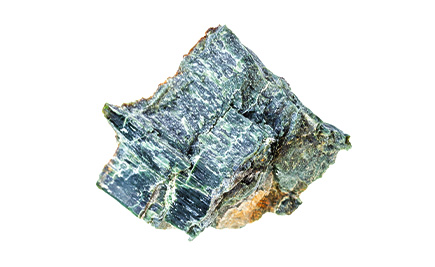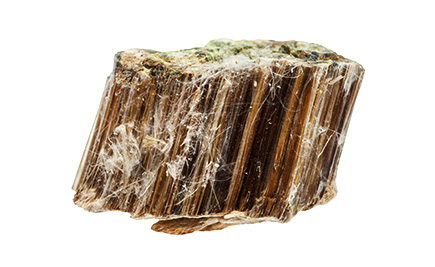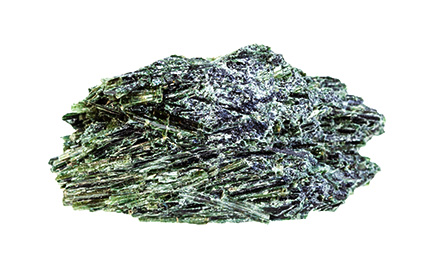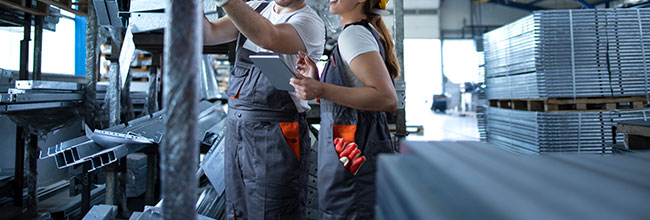Asbestos Exposure and Textile Workers | Risks and Prevention
The presence and danger of asbestos are apparent in more trades than you might be aware of.
In fact, it is often the case that people become surprised to learn that asbestos was a constant part of their daily work activities. One reason for this is simply because asbestos was not widely recognized as the dangerous material it is today.
But another reason is simply that the asbestos industry made the tragic decision to keep the documented knowledge about the danger of asbestos away from the general public.
Unfortunately, this includes those who worked in the textile industry.
With that in mind, here’s what you need to know about asbestos exposure and textile workers.
!
If you believe that you were exposed to asbestos, even as a child, speak to a healthcare provider about tests and screening to help diagnose lung-scarring and screen for asbestos-related diseases.
Asbestos: High in Demand, Low in Cost
During the initial use of asbestos throughout the construction industry, very few people were aware of the health risks that the mineral posed. Instead, asbestos was considered a miracle mineral that seemed almost magical. It could be used to strengthen other materials, thanks to its durable properties:
Heat resistance
Corrosion resistance
Resistance to electrical conductivity
Not soluble in water
Strength and insulation properties
Just these features alone made asbestos a material in high demand, but along with its impressive qualities, asbestos as a natural mineral was also relatively cheap to produce. The high demand and low cost of asbestos were even more apparent within the construction and manufacturing industries because of the range of asbestos types available.
“The overall evidence suggests there is no safe level of asbestos exposure.”Source: National Cancer Institute (NIH)1 |
What is asbestos? (An industry term for six types of minerals with amazing qualities.)
There are two main groups of asbestos, serpentine and amphibole asbestos, which are designated by the kind of fibers they have. Within these two groups of asbestos, there are various types that are further categorized by their color and fiber type.
| Chrysotile | Crocidolite | Amosite | Anthophyllite | Actinolite | Tremolite |
 |  |  |  |  |  |
In terms of manufacturing, these different asbestos types are helpful in determining what works best for different industrial uses, such as cement, rubber, roofing, and much more. It was quickly determined that asbestos, in its many varieties, could be used for virtually any construction or industrial application imaginable, making it that much more demanding.
People who worked in these industries prior the mid-1980s have a higher risk of developing asbestos-related diseases:
| Construction | Factories | Foundries | Refineries | Shipyards | Mining / Milling |
| Demolition | Insulation | Steelworkers | Pipe Fitting | Shipbuilding | Mechanics |
 |  |  | |||
| Roofing | Textiles | Iron workers | Boilers | Firefighting | Brake Repair |
| Flooring | Cement | Electricians | Gasket Repair | Railroad | HVAC |
Unfortunately so do their families.
Work Risks During or Before the 1980s
This general practice of using asbestos extensively was heightened in the wake of the Industrial Revolution, and continued up until the late 1980s in America. Despite what the industry had known for decades, it was finally becoming public knowledge that asbestos fibers cause significant health problems and no level of asbestos exposure is safe. This had to do in part with the ongoing increase in asbestos-related lawsuits but really became widespread public knowledge after the Environmental Protection Agency banned most asbestos products in the United States in 1989.
Once that action took place, people began to become aware of the significant health risks of asbestos- but they also became aware of how prevalent a material asbestos had been in prior generations. Essentially, all homes and structures built before 1989 should almost be assumed to contain asbestos in some capacity.
The health risks of asbestos exposure to mechanics can include:
| Mesothelioma: cancer of the mesothelium, the thin layer of tissue surrounding the body’s organs. This cancer is only known to be caused by asbestos exposure. | Lung cancer |
| Laryngeal cancer: cancer of the larynx (section of the throat called the voicebox) | Ovarian cancer |
| Stomach cancer | Colon cancer |
| Pharyngeal cancer | Asbestosis: a chronic lung disease associated with asbestos exposure |
| Chronic Obstructive Pulmonary Disease (COPD) | Atelectasis (collapsed lung) |
| Pleural effusion (collection of fluid around the lungs) | Pericardial effusion (collection of fluid around the heart) |
What are the Risks of Asbestos Exposure?
Some varieties of asbestos remain unnoticed in older buildings, that is until mold or structural damage takes place. When such events take place, it should prompt home and business owners to start asking important questions of safety, including, does this damaged roof contain cement with asbestos in it, or does the concrete foundation contain asbestos? While it is safe to assume that older buildings do in fact contain asbestos, the best course of action is to have a professional company perform a test to determine the presence of asbestos fibers in your home or place of business.
Knowing the answer to these concerns can equip you with the information needed to protect yourself and others from the dangers of asbestos. Asbestos exposure has to do with the risk of being exposed to tiny, microscopic asbestos fibers that can be swallowed or inhaled into your body. These fibers have no smell or taste, but long-term exposure can lead to detrimental health effects that show up decades after exposure, such as lung diseases and cancers like mesothelioma.
“Some asbestos fibers may bypass…your body’s natural defenses…and lodge deep within your lungs. Those fibers can remain in place for a very long time and may never be removed.”Source: American Lung Association |
Asbestos Presence in Textile Making
Unfortunately, these kinds of asbestos exposure risks apply to construction workers in general, as well as textile workers specifically. Textile workers are responsible for working with synthetic fibers that are used to make things like clothing, household and industrial goods, and much more. This particular trade has a rich history dating back over seven thousand years, with a range of uses including cotton, linen, fabrics, and silk.
Textile making often involved higher asbestos exposures than even asbestos mining.
Unfortunately, textile work was yet another industry that, prior to 1989, utilized woven asbestos as a way to strengthen materials and impart qualities such as heat resistance. This was even the case in the ancient world when asbestos was woven into cloth for sound-dampening purposes, one of the earliest examples of modern-day insulation.
| The First Person to File an Asbestos Claim was a Textile Worker named Nellie Kershaw. |  |
But while asbestos has a rich history in the textile industry, both ancient and modern, asbestos also finds its legal history within the textile industry as well. Nellie Kershaw is noted as the first-ever recorded asbestos victim. Born in 1891 in England, this woman worked in the textile industry at 12 years old and continued in that industry for many years. Unfortunately, by the 29, Nellie developed pulmonary symptoms from asbestos exposure that eventually took her life.
“Generally, those who develop asbestos-related diseases show no signs of illness for a long time after exposure.”Source: National Cancer Institute (NIH)2 |
But Nellie is not merely known as the first in a long line of tragedies due to the dangers of asbestos exposure. Instead, she is also known because of her inability to receive any form of compensation to survive or help pay for her illness. There was no recognition of asbestos during the early part of the 20th century as an applicable occupational illness, and Kershaw’s employer, Turner Brothers Asbestos Company, did not take any responsibility for knowingly subjecting her to the deadly effects of asbestos exposure.
Nellie Kershaw’s death helped raise awareness of asbestos health dangers. But it took many decades for the industry to admit it.
Because it takes decades for asbestos diseases to appear.
The sad outcome of Kershaw’s death in the United Kingdom helped raise awareness to the watching world about the dangers of asbestos, and despite the fact that it took over half a century from the time of her death until the United States banned most forms of asbestos, her story has undoubtedly played a role in equipping employees with the most important element of asbestos concerns: the truth.
Do You Qualify For Compensation?
Quickly and easily find out how you were exposed by searching W.A.R.D., the largest asbestos database on the planet.
FREE SEARCH >Legal Options and Compensation for Textile Workers
While current textile workers should not expect the materials used today to contain asbestos, there are instances where asbestos lingers. Not only in the case of non-reputable businesses sourcing materials from other countries that do not prohibit asbestos but also in the case of older textile facilities that may still contain asbestos from the days of the building’s construction.
Regardless of how you may have been exposed as a textile worker, you need to know that, unlike Nellie Kershaw, you have legal options.
| Even lifelong smokers can collect compensation for asbestos damage. | |
 | Many of our clients believed they weren’t eligible to file an asbestos lawsuit because they were cigarette and cigar smokers. This isn’t true under the laws of many states. Our database contains the medical evidence needed to show that smokers who are exposed to asbestos are far more likely to develop cancer than smokers who weren’t exposed to asbestos. Cigarettes and asbestos are far more dangerous than cigarettes or asbestos. |
 |
| Many of our clients believed they weren’t eligible to file an asbestos lawsuit because hey were cigarette and cigar smokers. This isn’t true under the laws of many states. Our database contains the medical evidence needed to show that smokers who are exposed to asbestos are far more likely to develop cancer than smokers who weren’t exposed to asbestos. Cigarettes and asbestos are far more dangerous than cigarettes or asbestos. |
Asbestos Litigation may be the best option for severe injuries like cancer because they often receive higher compensation.
First, you can make an asbestos claim with the help of an asbestos attorney. Asbestos exposure can happen if you were exposed before the 1989 EPA ban, if you have been exposed afterward, or if you were exposed secondhand as a family member of a textile worker.
However, legal court cases for receiving financial compensation can often be difficult, and they are not the fastest pathway to receiving compensation. A much easier and often much faster way to receive compensation without the need to file a lawsuit is to seek compensation from an asbestos trust.
Asbestos Trusts are generally the fastest and easiest way to receive compensation for an asbestos claim. We have helped thousands of clients.
Over $30 Billion is still available (No lawsuit. No fees unless you receive money. No risk.) Stake your claim.  |
There are several asbestos trusts related to textile workers, including:
You should know there are also various other trusts available beyond these. Getting the help and professional expertise of an asbestos claims attorney can help you determine which option is best (and fastest) for you to receive the compensation you need.
AsbestosClaims.Law
At AsbestosClaims.Law, our mission to secure compensation for asbestos victims is more than professional; it’s personal.
Our founder, Justinian C. Lane, understands the devastating impacts of asbestos firsthand.
Both his grandparents and father, all asbestos workers, passed away from asbestos-induced cancers without realizing their eligibility for asbestos lawsuits or other forms of compensation.
We aim to prevent such tragic oversights by informing and guiding victims and their families through their legal options.
If you or your loved ones have suffered as a result of asbestos exposure, you could be eligible for considerable compensation. These funds could provide for medical treatments, asbestos removal services, and safeguard your health.
In addition, asbestos trusts offer compensation without the need for a lawsuit, providing a quicker, simpler path to justice.
Reach out to us at [email protected] or (206) 455-9190 for assistance with your claim. We offer compassionate listening, clear explanations, and we don’t charge a dime unless we win your case.
Beyond legal claims, we also advise on veterans’ disability, social security, and employment protection like workers’ compensation, FELA, and The Jones Act for maritime workers.
There’s no risk or cost to connect with our experienced team about your rights. Our commitment to your well-being means no fees unless you receive compensation.
| For further queries or concerns about asbestos, explore our website and YouTube page, featuring infographics, videos, and answers to common questions on asbestos-related topics. |
We’ve also introduced W.A.R.D., the Worldwide Asbestos Research Database. It’s the most comprehensive resource for asbestos-related information.
W.A.R.D. assists in pinpointing potential exposure scenarios, asbestos-containing products, and can indicate the types and potential amounts of compensation you may be entitled to receive.
Don’t delay — get in touch with us today!
1 National Cancer Institute (NIH), Asbestos Fact Sheet.
2 National Cancer Institute (NIH), Asbestos Fact Sheet.